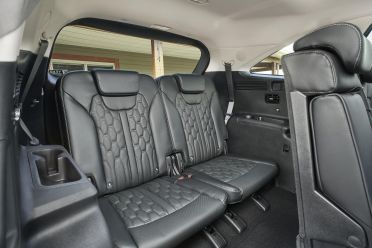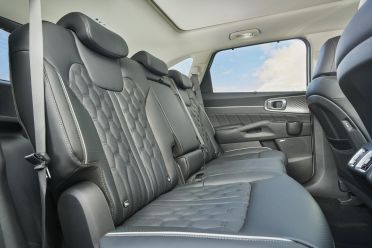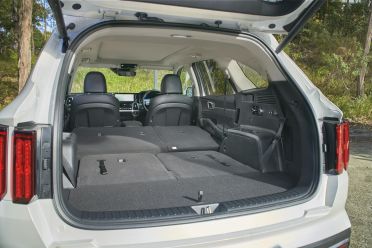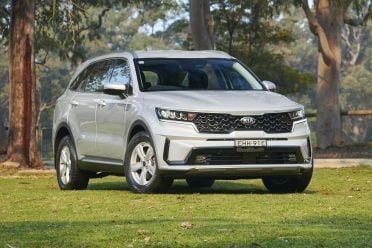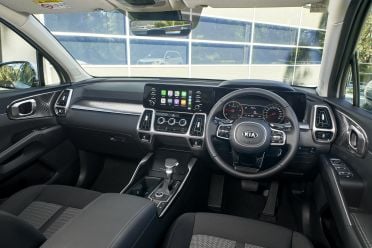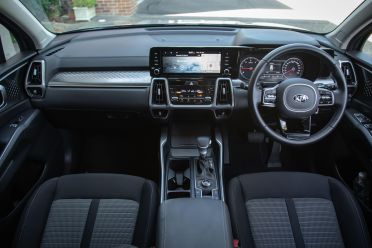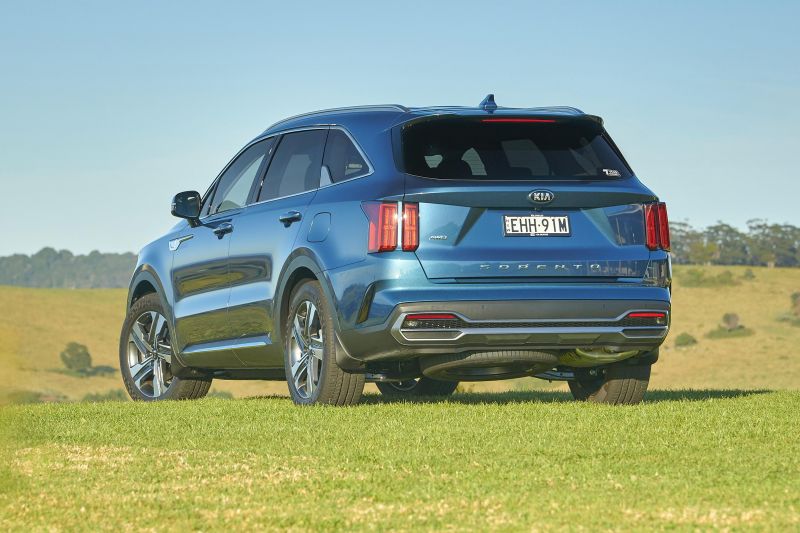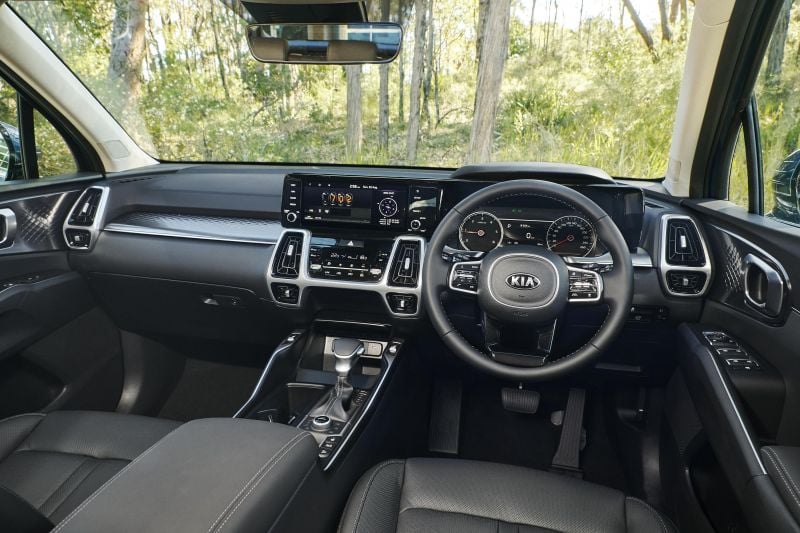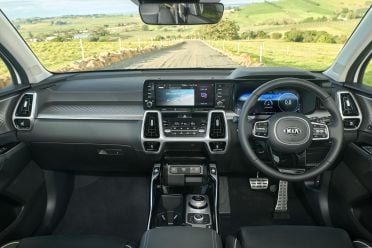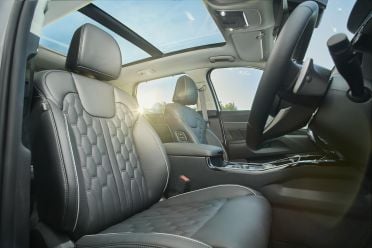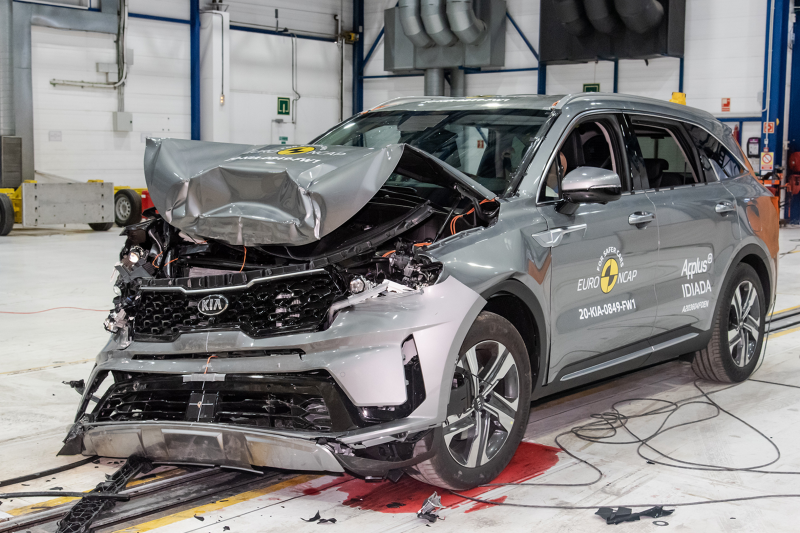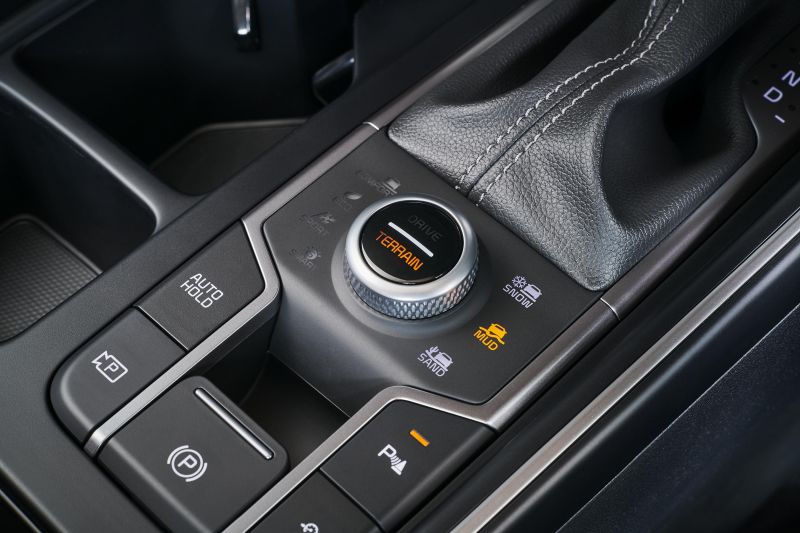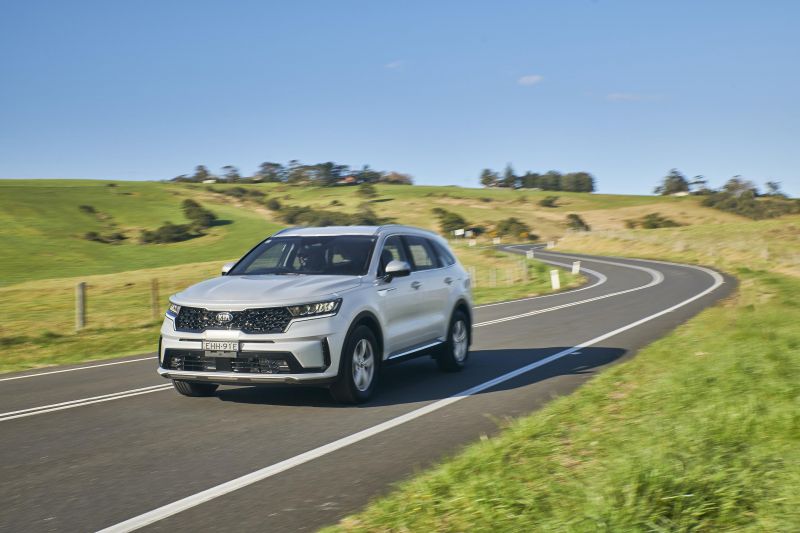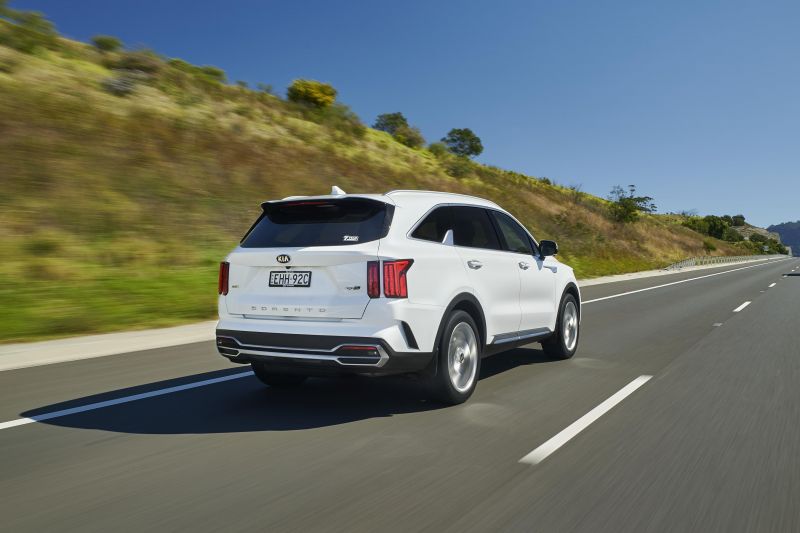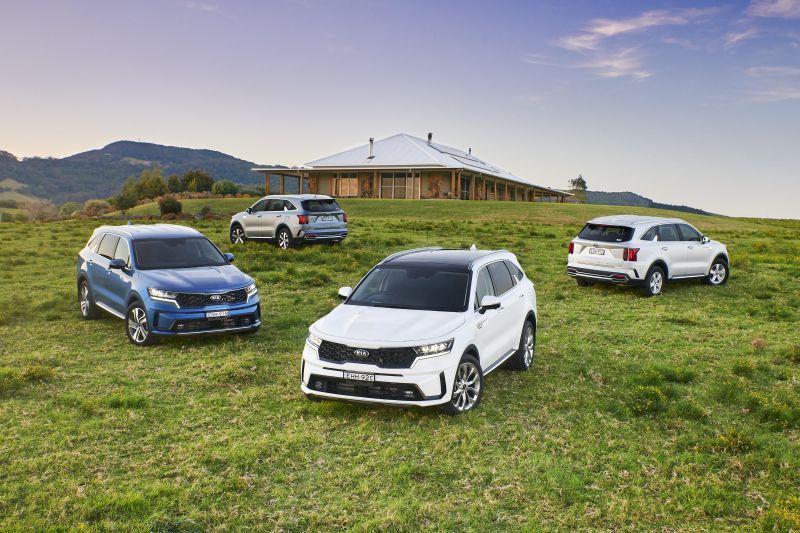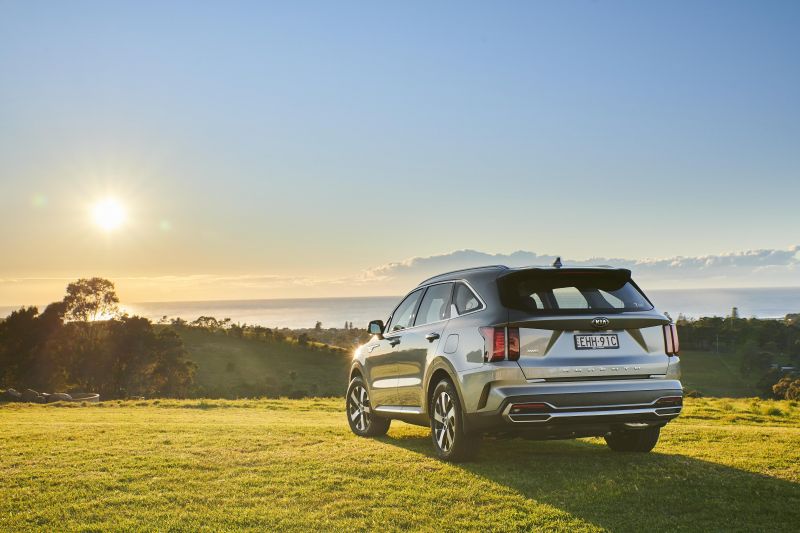Simply put, the Kia Sorento is one of the best large SUVs in its price bracket, though rivals such as the Toyota Kluger, Mazda CX-9, Hyundai Santa Fe and Skoda Kodiaq all offer stiff competition.
If you’ve done your homework and decided the Sorento is the next family bus for you, you need to start whittling down the different variants.
This range review will step you through the line-up, explaining the different specification levels and drivetrains. It’ll also draw on our previous experiences behind the wheel.
The goal is to help you hopefully decide which Sorento derivative you ought to buy, if it’s the Kia you’ve settled on.
Pricing
Kia advertises the drive-away prices of its cars, so we’ll talk about cost on this basis.
There are four Kia Sorento variants or spec levels, all of which come with the choice of a petrol or diesel engine.
- Kia Sorento S V6 FWD: $49,290
- Kia Sorento S Diesel AWD: $52,290
- Kia Sorento Sport V6 FWD: $52,290
- Kia Sorento Sport Diesel AWD: $55,290
- Kia Sorento Sport+ V6 FWD: $56,690
- Kia Sorento Sport+ Diesel AWD: $59,690
- Kia Sorento GT-Line V6 FWD: $64,290
- Kia Sorento GT-Line Diesel Awd: $67,290
The standard colour Clear White at no extra cost. You’ll pay $695 extra for Silky Silver, Steel Grey, Mineral Blue, Gravity Blue, Aurora Black, and Snow White Pearl.
Features
Given there is a $18,000 price difference between the top-spec diesel GT-Line and the entry-spec S, you can be sure moving through the range brings a growing list of features and creature comforts.
We feel for most buyers the Sport or Sport Plus variants would be the way to go. For those on a tighter budget or after a no-frills car with excellent ride, the S is also a great option.
Of course, if you want it all and then some, the GT-Line is the sure winner.
Kia Sorento S models come standard with:
- 17-inch alloy wheels
- 235/65 Continental tyres
- Full-size alloy spare
- Front and rear parking sensors
- Reflector LED auto headlights
- Rain-sensing wipers
- Roof rails
- Seven cloth seats
- 4 x USB points
- 8.0-inch touchscreen
- Wired Apple CarPlay and Android Auto
- Bluetooth phone and audio
- Digital radio
- Six-speaker audio
- Manual air-conditioning
- Second-row air vents
The ride quality in the S is the best in the Sorento range thanks to its high-sidewall tyres, but you know you’re in a fleet special because you have to put a key in the ignition barrel.
The touchscreen is also small relative to the rest of the range.
MORE: 2021 Kia Sorento S Diesel AWD review
Kia Sorento Sport models gain:
- 18-inch machine finish wheels
- Tyre-pressure monitor
- 10-way powered driver’s seat
- Passenger sun visor sliding function
- 10.25-inch touchscreen
- Satellite-navigation
- Dual-zone climate control
- Third-row fan control, vents
Outside of fleet buyers this seems like an easy decision over the S.
The extra cost over the base model is justified by the better infotainment system and climate control alone.
MORE: 2021 Kia Sorento Sport Diesel AWD review
For a further $4400, Kia Sorento Sport+ models gain:
- 19-inch machine finish wheels
- 235/55 Continental tyres
- LED combination rear lights
- Powered tailgate
- Tinted privacy glass
- Aero-blade type wipers
- Proximity key access and exit
- Remote engine start function
- Leather-appointed seats
- Heated front seats
- Auto-dimming rear mirror
- Heated steering wheel
- Safety function for all auto up/down windows
- 4 x extra USB points
For many people the leather seats, powered tailgate, and privacy glass for back-seat occupants will be highly desirable extras. Ditto the hands-free proximity key.
MORE: 2021 Kia Sorento Sport+ V6 FWD review
MORE: 2021 Kia Sorento Sport+ Diesel AWD review
For a further $7600, Kia Sorento GT-Line models gain:
- 20-inch dark chrome alloy wheels
- 255/45 Continental tyres
- Projector LED headlights
- Blind-spot camera in instruments
- Electronic child safety lock
- Smart key with remote-control parking
- Kerbside auto-dipping side mirrors
- Panoramic sunroof
- Quilted Nappa leather seats
- Ventilated front seats
- Heated outboard second-row seats
- 14-way powered driver seat with memory
- 10-way powered front passenger seat
- Shift-by-wire rotary gear dial
- Paddle shifters
- 12.3-inch digital instruments
- Projecting head-up display
- 64 interior lighting colours
- Alloy pedals and door scuff plating
- LED interior reading lights
- Second-row sun shades
- Wireless phone charger pad
- Bose 12-speaker sound system
- In-car intercom system
While the 20-inch wheels and slim tyres won’t help the ride quality, the range-topping Sorento is best thought of as a genuine alternative to more expensive European fare in terms of its tech.
MORE: 2021 Kia Sorento GT-Line Diesel AWD review
MORE: 2021 Kia Sorento GT-Line v Mazda CX-9 GT comparison
| Kia Sorento petrol | Kia Sorento diesel | |
|---|---|---|
| Length | 4810mm | 4810mm |
| Width | 1900mm | 1900mm |
| Height | 1700mm | 1700mm |
| Wheelbase | 2815mm | 2815mm |
| Clearance | 176mm | 176mm |
| Tare weight | 1835kg | 1908kg |
| Payload | 725kg | 702kg |
| Boot (2 seats up) | 2011 litres | 2011 litres |
| Boot (5 seats up) | 616 litres | 616 litres |
| Boot (7 seats up) | 187 litres | 187 litres |
Safety
All Kia Sorento models come with dual-front, front-side, and first- and second-row curtain airbags. They don’t extend all the way along the third seating row.
There are also five top-tether and four ISOFIX anchors, and Safe Exit Assist that warns you if someone is about to open their door into moving traffic or cyclists when parked.
All variants come with active safety features including forward autonomous emergency braking for cars, pedestrians, cyclists and junctions.
Also standard are a driver attention monitor, active lane-keep assist, blind-spot monitoring, rear cross-traffic alert, and adaptive cruise control.
The Kia Sorento received a five-star ANCAP safety rating for both petrol and diesel models.
It earned a safety assist score of 89 per cent, along with 82 per cent for adult occupant protection, 85 per cent for child occupant protection, and 63 per cent for vulnerable road user protection.
Drivetrains
There are two engines to choose from.
The more affordable option is a 3.5-litre petrol V6 making 200kW of power and 332Nm of torque, mated to an eight-speed torque-converter automatic and front-wheel drive.
For an extra $3000 you can instead opt for a 2.2-litre four-cylinder turbo-diesel engine making 148kW of power but a meatier 440Nm of torque, mated to an eight-speed dual-clutch automatic and on-demand all-wheel drive.
The petrol is smoother and quieter than the diesel (which itself is quite refined and well-matched to the dual-clutch transmission in our experience), but it’s also front-wheel drive only and therefore not as suited to weekend adventures.
Unless you travel very low mileage, the fuel consumption differential as shown in the below table also shows you’ll likely pay off the higher cost of the diesel model over a few years.
Moreover, while both are rated to tow 2000kg, the diesel does it far more economically.
For us, the diesel just makes more sense.
The Kia Sorento Plug-in Hybrid (PHEV) is set to launch in the third quarter of 2021, but the ‘self-charging’ Sorento Hybrid now isn’t due until the first quarter of 2022.
| Kia Sorento petrol | Kia Sorento diesel | |
|---|---|---|
| Engine | 3.5-litre V6 | 2.2-litre four |
| Power | 200kW | 148kW |
| Torque | 332Nm | 440Nm |
| Transmission | 8-speed auto | 8-speed DCT auto |
| Driven wheels | Front | Front/rear |
| Towing capacity | 2000kg braked | 2000kg |
| Fuel econ overall | 9.7L/100km | 6.1L/100km |
| Fuel econ urban | 13.7L/100km | 7.4L/100km |
| Fuel econ highway | 7.5L/100km | 5.3L/100km |
| CO2 overall | 222g/km | 159g/km |
| Fuel tank capacity | 67 litres | 67 litres |
Dynamics
The main differences from a dynamics perspective are the various wheel and tyre packages (the Sport plus and GT-Line are worse at ironing out sharp bumps); the diesels’ AWD with locking centre and terrain-specific throttle modes; and extra tare weight.
All Sorento models have electrically-assisted power steering, MacPherson strut front and multi-link rear suspension with an Australian-specific damper tune, and 325mm-rotor ventilated disc brakes front and rear.
Running costs
All Kias come with a seven-year, unlimited-kilometre warranty that’s above average in the industry.
Petrol and diesel models have 12 month or 15,000km servicing intervals.
The average annual service price for the petrol is $493, the average for the diesels is $495 over the first five years of ownership.
Verdict
Ultimately, the Kia Sorento range offers a variant for everyone. We recommend the Sport Plus as the best pick for the money.
Find out more about the car in our Kia Sorento buyers guide.
MORE: Everything Kia Sorento

